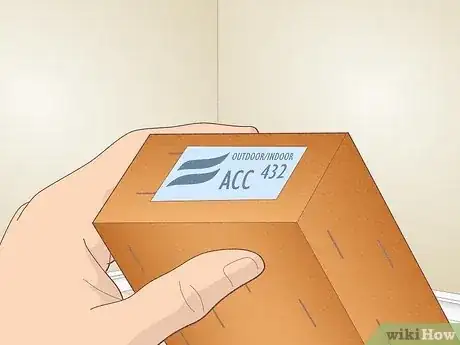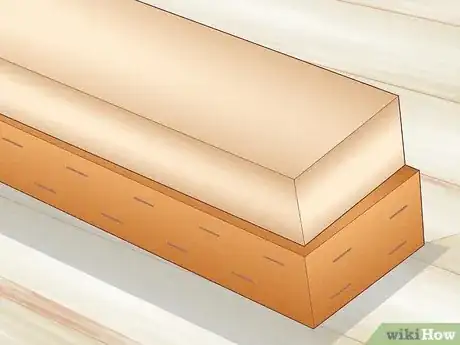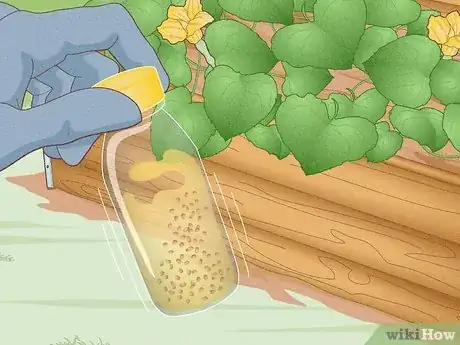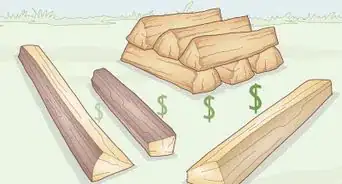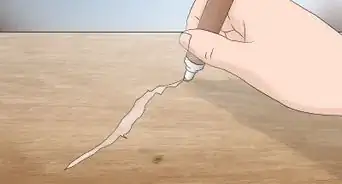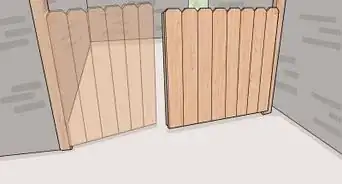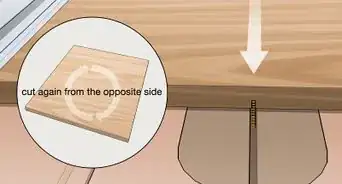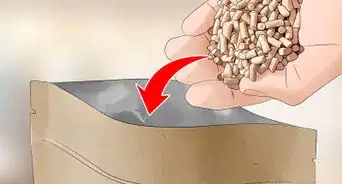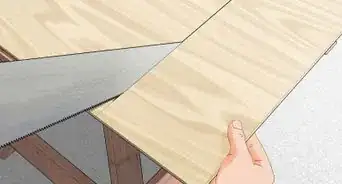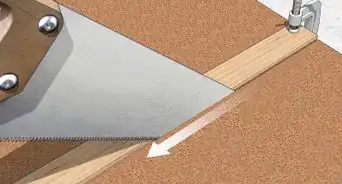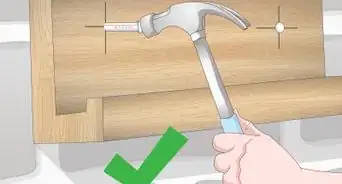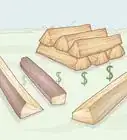This article was co-authored by Archie Guerrero and by wikiHow staff writer, Jessica Gibson. Archie Guerrero is a Commercial and Residential Painting Specialist and the Operations Manager for DGP Painting in Austin, Texas. With a decade of experience, Archie specializes in interior and exterior painting and staining, cabinet refinishing, and wallpaper and popcorn removal. DGP Painting offers clients environmentally friendly paint materials and top-of-the-line paint products. DGP Painting has an A+ rating with the BBB and has been in Austin’s “Best of the Best.”
There are 7 references cited in this article, which can be found at the bottom of the page.
This article has been viewed 12,300 times.
Pressure-treated wood resists fungal rot and destructive pests, making it a great option for decks or fences. However, since it's treated with chemicals like arsenic, creosote, and copper, it's important to know when you're dealing with pressure-treated wood, especially if you're using the wood in a garden or playset since chemicals can leach into the soil. To tell if old or new wood has been pressure treated, read through our list of things to look for.
Things You Should Know
- Read the white tag on the end or find the colored stamp on the wood to see if the wood has been pressure treated.
- Look for a tell-tale green tint, or smell the wood—pressure-treated wood has a chemical or oily odor.
- Check for incision marks across the entire surface of the wood. These incisions help the preservatives penetrate deep into pressure-treated wood.
Steps
Expert Q&A
-
QuestionCan you paint pressure-treated wood?
 Archie GuerreroArchie Guerrero is a Commercial and Residential Painting Specialist and the Operations Manager for DGP Painting in Austin, Texas. With a decade of experience, Archie specializes in interior and exterior painting and staining, cabinet refinishing, and wallpaper and popcorn removal. DGP Painting offers clients environmentally friendly paint materials and top-of-the-line paint products. DGP Painting has an A+ rating with the BBB and has been in Austin’s “Best of the Best.”
Archie GuerreroArchie Guerrero is a Commercial and Residential Painting Specialist and the Operations Manager for DGP Painting in Austin, Texas. With a decade of experience, Archie specializes in interior and exterior painting and staining, cabinet refinishing, and wallpaper and popcorn removal. DGP Painting offers clients environmentally friendly paint materials and top-of-the-line paint products. DGP Painting has an A+ rating with the BBB and has been in Austin’s “Best of the Best.”
Commercial & Residential Painting Specialist Pressure-treated wood can be painted, stained, or primed only once it has dried out. If it is still drying, the paint will peel and not stick to it. You can perform a simple test: pour a handful of water onto your wood. If the water beads up, the wood is still wet and not ready for painting; if it soaks into the surface, the wood can be painted or stained.
Pressure-treated wood can be painted, stained, or primed only once it has dried out. If it is still drying, the paint will peel and not stick to it. You can perform a simple test: pour a handful of water onto your wood. If the water beads up, the wood is still wet and not ready for painting; if it soaks into the surface, the wood can be painted or stained.
References
- ↑ http://npic.orst.edu/factsheets/treatedwood.html
- ↑ https://extension.okstate.edu/fact-sheets/basics-of-pressure-treatment-of-wood.html
- ↑ https://www.mass.gov/doc/qa-pressure-treated-wood/download
- ↑ https://dtsc.ca.gov/toxics-in-products/treated-wood-waste/
- ↑ https://www.bobvila.com/articles/7-important-things-to-know-about-pressure-treated-wood/
- ↑ https://www.pca.state.mn.us/sites/default/files/w-hhw4-75.pdf
- ↑ https://floridadep.gov/sites/default/files/CCA-Treated-Wood-Guidance_Doc_06Mar18.pdf
